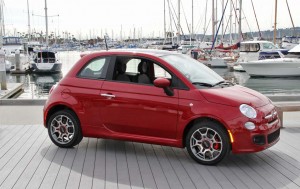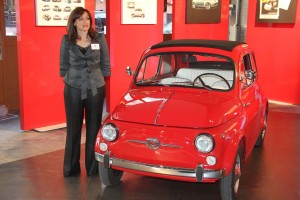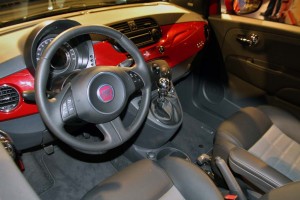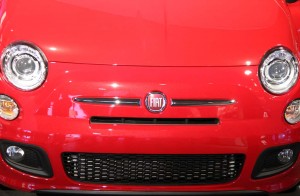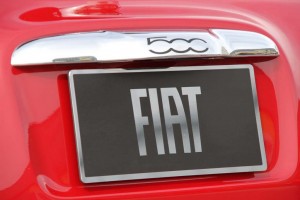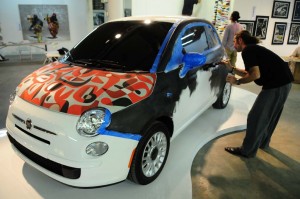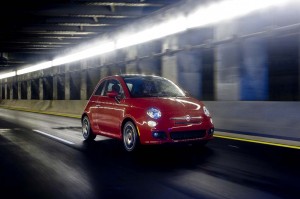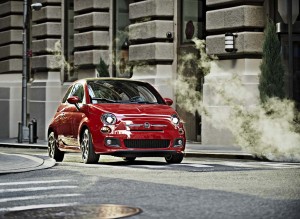Who says good things come in small packages? Probably anyone who gets the chance to drive the new, U.S. version of the Fiat 500.
The Italian microcar has won a procession of awards back on the home continent, including the much-coveted World Car of the Year. But the question is whether American motorists will give the U.S. version of the Fiat 500 a similarly warm reception.
This is a Costco nation that lives by the motto, “bigger is better,” and nowhere is that more apparent than in the automotive industry – though there are some telling hints of a shifting mindset. While demand for the struggling Smart fortwo is rapidly drying up, that seems to be more the result of product flaws than an inherent market resistance to small cars. The continuing success of the British-made Mini is certainly more compelling – at least for Fiat planners.
Laura Soaves, who is overseeing the U.S. launch of the Fiat brand, projects that by 2014 small car sales in the U.S. will double, to nearly 1 million – a trend other experts echo. Oh, and make that “re-launch” the Fiat brand, which poses a separate challenge. The Italian maker abandoned the American market in haste, a quarter-century ago, driven out by quality problems that led to plunging sales.
True, a sizable share of today’s motorists weren’t even alive, let alone buying cars, back then. But will the returning Fiat be saddled with the supposed acronymn, Fix-it-again-Tony, or stand for something else entirely more positive?
To get a sense of what’s in store, we headed out to San Diego, where a small fleet of Fiat 500s were lined up and waiting for a couple days of driving along the trendy coast and into the rolling interior near the Mexican border.
To give us a sense of heritage, Soave and her team brought in one of the original versions of the old Fiat Cinquecento, which made it first appearance on July 4, 1957. If you think the new model is small, check them out side-by-side. Familiar to those who enjoy the British cult comedy, Mr. Bean, the original was the sort of circus car from which emerged an endless stream of clowns. One might expect it to come equipped with an electric can opener.
(Chrysler plans to export the 500 to markets from Brazil to China. Click Here for more.)
The Italian maker tested the waters for a revival of its micro offering with the prototype dubbed, in English 3+1, which debuted at the Geneva Motor Show in 2004 – the name suggesting it had space for three adults and one child.
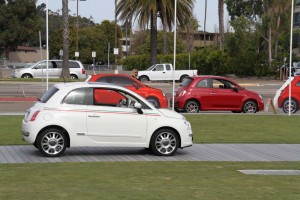
The European version, shown here, is about 2 inches shorter than the American version of the Fiat 500.
The rousing response convinced Fiat to bring the Cinqucento back to market, and the official launch, readied in secret under the codename 312, occured 50 years to the day after the original model made its appearance.
Once American eyes get past the visual shock and the idea of climbing into something so small, you’ll quickly connect with the design and engineering work that has gone into the little Fiat. In something so small, form has to follow function, yet the form is very, very appealing. Like many small cars, the new 500 is tall, rather than long, allowing a high-seat layout that makes it possible to really fit four inside – albeit not long if you’re stuck in the rear.
The design also makes it possible to get in and out without needing that can opener.
To maximize the Fiat 500’s road manners, the driver sits almost dead in the middle of the vehicle. It’s an optimum placement we soon came to appreciate.
We’ve come to expect some modest and occasionally significant changes will be made translating a European design for the American market. What’s surprising is how little this changed the appearance of the Fiat 500, which is barely two inches long in U.S. trim, despite getting the more protective bumpers required in this market.
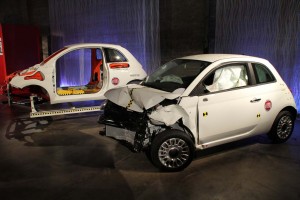
The results of a 40 mph offset crash test. A cutaway of the crash structure of the 500 is in the rear.
Safety, by the way, is a subject Fiat staff are quick to discuss, rather than shy away from. Soaves acknowledges it’s the “single biggest” issue American car buyers focus on when looking at a small car, so the maker is taking the lead on the topic. Among other things, they point out the seven onboard airbags, and stress that the 500 earned the top Euro NCAP V crash rating at home. Not yet tested here, the hope is nonetheless to “ace” that test, as well.
Along with the modified bumpers, another change for U.S. safety standards meant the fuel filler door was moved up slightly.
The American version also gets redesigned headlamps, Big Gulp-sized cupholders and, adds product manager Joe Grace, different seats. Seeking a tactful way to put it, these “accommodate for American customers.” Notice there was no official reference to our oversized butts.
The overall interior is smartly executed, with a subtle retro feel, but not one that takes you back to the era of cheap-and-cheerful econoboxes. The 500 has a surprisingly elegant and refined feel to it, underscored by the material choices in the cabin, and the well-executed controls. And those who find the center-mounted display layout in the Mini line will appreciate having the nicely-lit and very readable gauge cluster of the Fiat 500 directly in front of your eyes.
While safety is always a minicar question, performance is another common question from those considering a car like the Fiat 500. Though this isn’t a muscle car, it moves.
The 4-seater is powered by a 1.4-liter engine using Fiat’s new multi-air injection system. The technology is capable of precisely tailoring the way air is blown into each cylinder just before the fuel mixture ignites. Without going into the subtle details, the takeaway is simple: you get more mileage, better performance and fewer emissions, and that’s true whether you’re stuck in traffic, cruising around town or out on the open highway.
The numbers: 101 horsepower and 98 lb-feet of torque. Launch feel is solid and there’s enough power to deliver a solid throttle response under most driving conditions without constantly having to work the gearbox.
And, incidentally, Fiat offers two of them: a nicely responsive 6-speed or a 5-speed manual. Unfortunately, the 6-speed stick used in Europe would not fit under the hood of the modified American version of the car.
Fiat claims multi-air yields a 15% increase in fuel economy. At 30 mpg City, 38 Highway, with the 5-speed, and 27/34 for the automatic, that’s not bad. But it’s also short of what you can get from a bigger car like the Chevrolet Cruze Eco, which uses a similarly-sized I4 to bump highway fuel economy up and over the 40 mpg mark.
Fiat engineers hint they already are looking at the next-generation multi-air engine, which would shift to direct injection – and yield perhaps 7% to 10% better mileage, as well as improved performance.
During our drive, my colleague at TheDetroitBureau.com, Denise McCluggage, put things into perspective suggesting the Fiat 500 “drives big.” That’s a compliment. The little coupe doesn’t bounce and buck or yaw like the fortwo or many other small cars, especially when trying to traverse rough pavement.
No, it’s not quite the pocket sports car of the Mini Cooper, or especially the John Cooper Works edition, but the Fiat 500 definitely delivers a fun-to-drive experience that will thrill those who want more than a car promising an appealing “lifestyle” experience.
That is part of the pitch, though. The Fiat marketing team is trying to shift away from the usual messaging. In particular, they insist there is no “base” car, even though the Pop edition is lowest-priced, at $15,500. The Sport adds a few niceties, such as stiffer springs and shocks, 16-inch aluminum wheels, sportier seats and bodywork, among other things, and tacks on another $2,000. The top-line Fiat 500 Lounge tosses in still more, including the 6-speed automatic, at $19,500. Load on the Leather Package, the few other possible options – and even some unique customization features – and you’d still be struggling to get into the mid-$20,000 range.
As Mini has profitably discovered, Fiat is betting buyers will want to extensively customize their vehicles with trim pieces and decals, among other things.
Surprisingly, while such steps are typically linked to young buyers, Fiat’s Soave insists the car “has no demographics.” In other words, the Fiat 500 is aimed at a vast range of different buying groups, rather than trying to target one or two narrow niches.
Will it work? If our initial drive is any indication, the answer is a simple, “yes.” The driving experience will likely turn on those who check out the new minicar. And the looks will get plenty of folks into the showroom in the first place. When it comes to head-turning power, Fiat has scored big.
Significantly, the maker is planning for the future. The three versions of the Fiat 500 will soon be paired with a convertible, a battery car and a performance model from the Abarth operation. More, suggests Soave, will follow.
Fiat might have fled the country in shame, nearly three decades ago. But if the new 500 is any indication, it can hold its head high its return.

